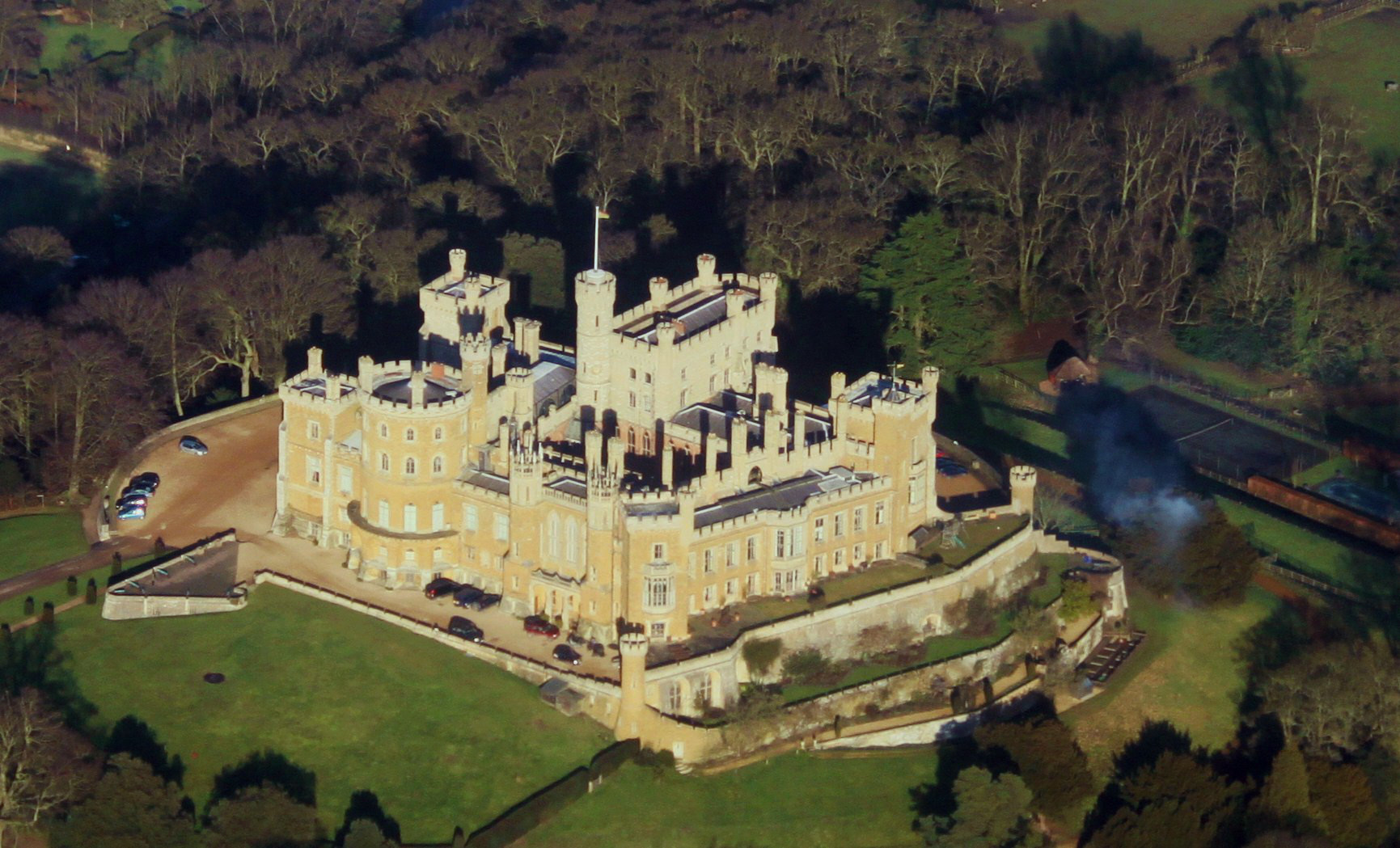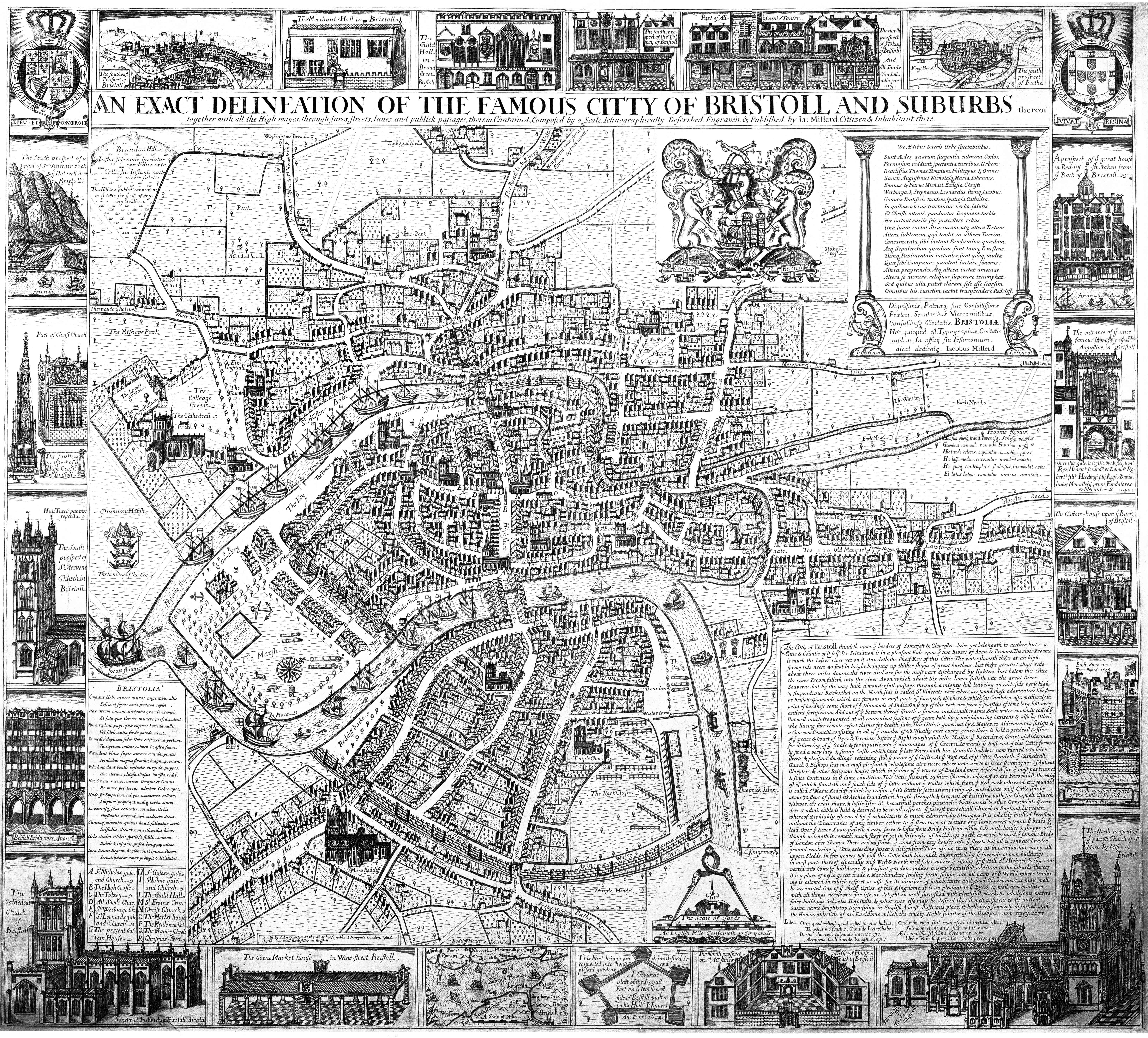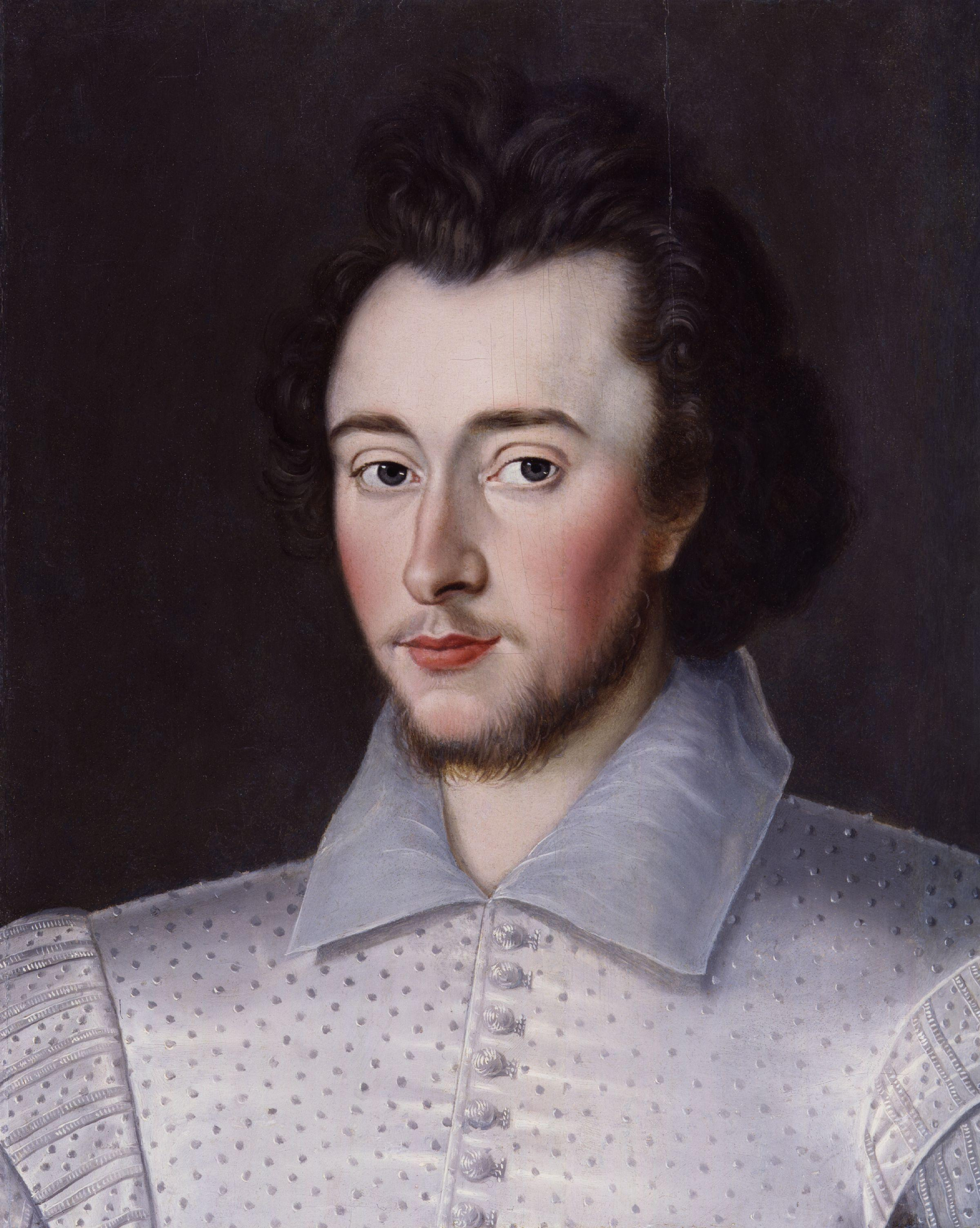|
Frances Southwell
Frances Southwell (died 1659) was an English courtier. She was a daughter of Sir Robert Southwell of Woodrising, Norfolk, and Elizabeth Howard. She was a gentlewoman of the Privy Chamber to Anne of Denmark, the wife of James VI and I. Her sisters Elizabeth Southwell and Katherine Southwell, later Lady Verney, were also members of the queen's household. Francis and Katherine Southwell were given mourning clothes on the death of Prince Henry in 1612. Christopher Sutton dedicated the 1600 edition of his ''Disce Mori'' to Frances' mother, and the 1613 edition to "the two virtuous modest gentlewoman, Mistress Katherine and Mistress Frances Southwell, sisters attending upon the Queen's Majesty in her honourable privy chamber". He omitted to mention Elizabeth Southwell who had left the court in disguise and contracted a doubtful marriage with Robert Dudley abroad. Frances died in 1659 and was buried at the Church of St Leonard, Rodney Stoke, where there is a wall monument including t ... [...More Info...] [...Related Items...] OR: [Wikipedia] [Google] [Baidu] |
Robert Southwell (died 1598)
Sir Robert Southwell (1563–1598), of Woodrising, Norfolk, was an English politician. Robert was the son of Sir Thomas Southwell and his second wife Mary, daughter of Sir Rice Mansel. Thomas's third wife was Nazaret or Nazareth Newton. He was High Sheriff of Norfolk for 1589–90 and Vice-Admiral of Norfolk from 1585 to 1598. He was a Member (MP) of the Parliament of England for Guildford in 1597. Robert was an admiral in 1588 in the battle with the Spanish Armada, in command of the '' Elizabeth Jonas''. His portrait was included in the Armada Tapestries. In 1591 the Privy Council asked him, as Vice-Admiral, to adjudicate in the case of a Scottish ship belonging to an Edinburgh merchant Archibald Johnston wrecked on the coast of Norfolk. He died on 12 October 1598 at Woodrising, and was buried on 16 November at Woodrising church. The chief mourner was his cousin Robert Mansell. Family On 27 April 1583 he married Elizabeth Howard, eldest daughter of Charles Howard, 1st ... [...More Info...] [...Related Items...] OR: [Wikipedia] [Google] [Baidu] |
Edward Rodney
Sir Edward Rodney (29 June 1590 – 1657) was an English politician who sat in the House of Commons at various times between 1621 and 1642. History Rodney was the son of Sir John Rodney of Rodney Stoke, Somerset, and his wife Jane Seymour, daughter of Sir Henry Seymour and niece of Queen Jane Seymour. He was educated at Trowbridge Grammar School and at Magdalen College, Oxford. He was then a student at Middle Temple where he "saluted only the law at a distance and mispent his time." In 1611 he accompanied William Seymour overseas after he escaped from the Tower of London to meet his wife Arbella Stuart. Seymour and Arbella were both in close line to the throne and they married secretly and without the King's consent, resulting in Seymour's imprisonment. Arbella was captured and later died in prison. Rodney returned to England later in 1611 leaving Seymour overseas for another four years. Rodney was knighted in May 1614 on the occasion of his marriage to a Lady in waiting to the ... [...More Info...] [...Related Items...] OR: [Wikipedia] [Google] [Baidu] |
16th-century English Women
The 16th century begins with the Julian year 1501 ( MDI) and ends with either the Julian or the Gregorian year 1600 ( MDC) (depending on the reckoning used; the Gregorian calendar introduced a lapse of 10 days in October 1582). The 16th century is regarded by historians as the century which saw the rise of Western civilization and the Islamic gunpowder empires. The Renaissance in Italy and Europe saw the emergence of important artists, authors and scientists, and led to the foundation of important subjects which include accounting and political science. Copernicus proposed the heliocentric universe, which was met with strong resistance, and Tycho Brahe refuted the theory of celestial spheres through observational measurement of the 1572 appearance of a Milky Way supernova. These events directly challenged the long-held notion of an immutable universe supported by Ptolemy and Aristotle, and led to major revolutions in astronomy and science. Galileo Galilei became a champion o ... [...More Info...] [...Related Items...] OR: [Wikipedia] [Google] [Baidu] |
Household Of Anne Of Denmark
A household consists of two or more persons who live in the same dwelling. It may be of a single family or another type of person group. The household is the basic unit of analysis in many social, microeconomic and government models, and is important to economics and inheritance. Household models include families, blended families, shared housing, group homes, boarding houses, houses of multiple occupancy (UK), and single room occupancy (US). In feudal societies, the royal household and medieval households of the wealthy included servants and other retainers. Government definitions For statistical purposes in the United Kingdom, a household is defined as "one person or a group of people who have the accommodation as their only or main residence and for a group, either share at least one meal a day or share the living accommodation, that is, a living room or sitting room". The introduction of legislation to control houses of multiple occupations in the UK Housing Act (2004) ... [...More Info...] [...Related Items...] OR: [Wikipedia] [Google] [Baidu] |
George Rodney Brydges
George Rodney Brydges or Bridges (after 1649 – 1714), of Avington, Hampshire, was an English Whig politician who sat in the English and British House of Commons between 1690 and 1714. Brydges was the second surviving son of Sir Thomas Bridges of Keynsham, Somerset and his wife Anne Rodney, the daughter and coheiress of Sir Edward Rodney of Stoke Rodney, Somerset. He was a captain in the Duke of York's independent company from 1673 until after 1675 serving in the Portsmouth garrison. He got into debt and in 1677 he recovered his fortune by marrying Anna Maria Talbot, Countess of Shrewsbury. She was born Lady Anna Maria Brudenell, daughter of Robert, 2nd Earl of Cardigan, was widow of Francis Talbot, 11th Earl of Shrewsbury and notorious as mistress of the 2nd Duke of Buckingham. In doing so, he brought an action for jactitation of marriage against Ann Smith, a shopkeeper with whom he had been living for some years. Brydges' wife bought him a post as Groom of the Bedchamber in ... [...More Info...] [...Related Items...] OR: [Wikipedia] [Google] [Baidu] |
Francis Manners, 6th Earl Of Rutland
Francis Manners, 6th Earl of Rutland, KG (1578–1632) was an English nobleman. Despite a brief imprisonment for his involvement in the Essex Rebellion of 1601, he became prominent at the court of James I. He lived at Belvoir Castle in Leicestershire. In 1618 three women, the "Witches of Belvoir", were accused of witchcraft for having allegedly caused the deaths of his two young sons. Biography Francis Manners was the second son of John Manners, 4th Earl of Rutland, and Elizabeth Charlton (died 1595), the daughter of Francis Charlton of Apley Castle, Shropshire. In 1598, he went abroad, travelling through France, Germany, and Italy, probably in the company of the former school teacher Robert Dalllington and Inigo Jones. On his return to England he took part, along with his older brother Roger and their younger brother George, in the 1601 rebellion of Robert Devereux, 2nd Earl of Essex, and was imprisoned in the Poultry Counter. He was fined a thousand marks and committed to t ... [...More Info...] [...Related Items...] OR: [Wikipedia] [Google] [Baidu] |
Anne Of Denmark And The Spa At Bath
Anne of Denmark (1574-1619) was the wife of James VI and I. She visited Bath, Somerset in the belief that drinking and bathing in mineral waters could improve her health. The warm springs at Bath had been used for medicinal purposes since Roman times. During her progresses to Bath she was entertained at country houses along the way. The court physician Théodore de Mayerne left extensive notes in Latin describing his treatment of Anne of Denmark from 10 April 1612 to her death. Primarily, she was seeking help for gout or dropsy, a swelling of the legs and feet which made walking difficult. Her companion and servant Jean Drummond described an occasion when the queen was unable to set her swollen foot on the ground. During these progresses, Anne of Denmark also promoted the image of the Stuart monarchy. At Bath in 1613 An undated plan for a progress of Anne of Denmark called a "gest" lists a visit to Lord Hertford's house Tottenham Lodge near Marlborough, travelling on 31 Augus ... [...More Info...] [...Related Items...] OR: [Wikipedia] [Google] [Baidu] |
Somerset House
Somerset House is a large Neoclassical complex situated on the south side of the Strand in central London, overlooking the River Thames, just east of Waterloo Bridge. The Georgian era quadrangle was built on the site of a Tudor palace ("Old Somerset House") originally belonging to the Duke of Somerset. The present Somerset House was designed by Sir William Chambers, begun in 1776, and was further extended with Victorian era outer wings to the east and west in 1831 and 1856 respectively.Humphreys (2003), pp. 165–166 The site of Somerset House stood directly on the River Thames until the Victoria Embankment parkway was built in the late 1860s. The great Georgian era structure was built to be a grand public building housing various government and public-benefit society offices. Its present tenants are a mixture of various organisations, generally centred around the arts and education. Old Somerset House 16th century In the 16th century, the Strand, the north bank of the Th ... [...More Info...] [...Related Items...] OR: [Wikipedia] [Google] [Baidu] |
Rodney Stoke
Rodney Stoke is a small village and civil parish, located at , 5 miles north-west of Wells, in the English county of Somerset. The village is on the A371 between Draycott and Westbury-sub-Mendip. The parish includes the larger village of Draycott. South of the A371 the parish includes an area of the Somerset Levels, extending to the River Axe. North of the A371 the southern slopes of the Mendip Hills rise to an area of the parish on the Mendip plateau. The parish is therefore an area of high biodiversity supporting local rare species of plants and animal life. History Close to the village is Westbury Camp, which represents the remains of an Iron Age enclosed settlement and has been designated as a Scheduled Ancient Monument. Rodney Stoke was listed in the Domesday Book of 1086 as ''Stoches'', meaning 'a stockaded settlement' from the Old English ''stoc''. In 1291 the place name was recorded as Stokgifford. The Giffords were Saxon nobility at the time of Edward the Co ... [...More Info...] [...Related Items...] OR: [Wikipedia] [Google] [Baidu] |
Church Of St Leonard, Rodney Stoke
The Church of St Leonard in Rodney Stoke, Somerset, England, was built around 1175 and is a Grade I listed building. The interior of the church contains a screen, bearing the date 1624, the gift of Sir Edward Rodney, which includes a representation of the martyrdom of St Erasmus, who was killed by having his entrails removed. The church underwent Victorian restoration in the 1870s when a slow combustion stove was installed in a pit in the floor. The parish is part of the Rodney Stoke with Draycott benefice which is within the Axbridge deanery. Burials * Sir Edward Rodney (1590–1657) * Frances Rodney (d. 1659) See also * Grade I listed buildings in Mendip * List of ecclesiastical parishes in the Diocese of Bath and Wells * List of Somerset towers The Somerset towers, church towers built in the 14th to 16th centuries, have been described as among England's finest contributions to medieval art. The paragraphs and descriptions below describe features of some of these tow ... [...More Info...] [...Related Items...] OR: [Wikipedia] [Google] [Baidu] |
Woodrising, Norfolk
Woodrising is a village and former civil parish, now in the parish of Cranworth, in the Breckland district, in the county of Norfolk, England. The village of Woodrising is south of Dereham. In 1931 the parish had a population of 103. The parish church of St Nicholas dates mainly to the 14th century, its tower collapsing in the early 18th century. The bell frame (bell-cot or bell-cote), with a thatched roof, is preserved nearby, although the bell within it may be of 19th century origin. History The villages name means 'Risa's people' or perhaps, 'Brushwood place' or 'people of the brushwood'. 'Wood' was a 13th century addition. The lords of the manor were the De Rising family, followed by the Southwell family, owners of Woodrising Hall, including Sir Richard Southwell (d. 1563) whose tomb is within the church, Sir Robert Southwell (d. 1598), and Thomas Southwell who sold the family estates to Francis Crane. The old Hall was demolished in the 18th-century leaving a moated ... [...More Info...] [...Related Items...] OR: [Wikipedia] [Google] [Baidu] |
Robert Dudley (explorer)
Sir Robert Dudley (7 August 1574 – 6 September 1649) was an English explorer and cartographer. In 1594, he led an expedition to the West Indies, of which he wrote an account. The illegitimate son of Robert Dudley, 1st Earl of Leicester, he inherited the bulk of the Earl's estate in accordance with his father's will, including Kenilworth Castle. In 1603–1605, he tried unsuccessfully to establish his legitimacy in court. After that he left England forever, finding a new existence in the service of the grand dukes of Tuscany. There, he worked as an engineer and shipbuilder, and designed and published ''Dell'Arcano del Mare'' (1645-1646), the first maritime atlas to cover the whole world. He was also a skilled navigator and mathematician. In Italy, he styled himself "Earl of Warwick and Leicester", as well as "Duke of Northumberland", a title recognized by Emperor Ferdinand II. Early life Robert Dudley was the son of Robert Dudley, 1st Earl of Leicester and his lover Douglas Sh ... [...More Info...] [...Related Items...] OR: [Wikipedia] [Google] [Baidu] |







